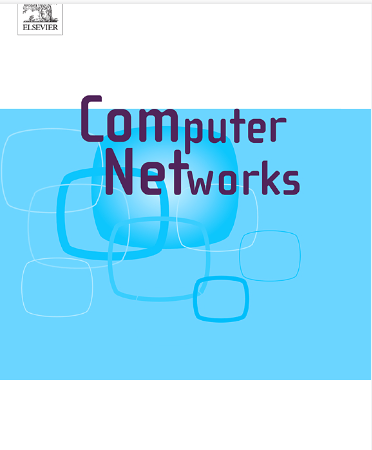Multi-channel real-time access with starvation avoidance for heterogeneous data in smart factories
IF 4.4
2区 计算机科学
Q1 COMPUTER SCIENCE, HARDWARE & ARCHITECTURE
引用次数: 0
Abstract
In Industrial Wireless Control Networks (IWCNs), Industrial Devices (IDs) generate massive amounts of Data Packets (DPs) with different Quality of Service (QoS) requirements. However, most of the existing works set different priorities for differentiated transmission of heterogeneous data, and the high-priority DPs will access the channel immediately after they are generated. This may result in the access starvation of low-priority DPs in time-frequency resource-constrained IWCNs. In this paper, we study the collaborative transmission algorithm of heterogeneous data to avoid access starvation for lower-priority DPs while guaranteeing QoS for higher-priority DPs. Specifically, we first design an edge-assisted learning architecture with multi-access edge computing to assist the training of the algorithm. Then, to mitigate access conflicts among IDs, a gated recurrent unit enhanced Multi-Agent Deep Reinforcement Learning (MADRL) framework was adopted. Based on the framework, we propose a Multi-criteria Decision based dynamic Multi-channel Access (MDMA) algorithm, where high-priority DPs can consider waiting for access according to their own criteria to avoid preempting the channel access opportunity of low-priority DPs approaching the deadline. Extensive simulations show that the proposed MDMA algorithm outperforms the existing algorithms in terms of the average channel utilization rate and the average completion rate of heterogeneous data.

智能工厂中异构数据的多通道实时访问与饥饿避免
在工业无线控制网络(IWCN)中,工业设备(ID)会产生大量数据包(DP),这些数据包具有不同的服务质量(QoS)要求。然而,大多数现有研究都为异构数据的差异化传输设置了不同的优先级,高优先级的数据包在生成后会立即访问信道。这可能会导致低优先级 DP 在时频资源受限的 IWCN 中陷入访问饥渴。本文研究了异构数据的协同传输算法,以避免低优先级 DP 的访问饥渴,同时保证高优先级 DP 的 QoS。具体来说,我们首先设计了一种边缘辅助学习架构,利用多访问边缘计算来辅助算法的训练。然后,为了缓解 ID 之间的访问冲突,我们采用了门控递归单元增强型多代理深度强化学习(MADRL)框架。在此框架的基础上,我们提出了一种基于多标准决策的动态多信道接入(MDMA)算法,其中高优先级 DP 可以根据自己的标准考虑等待接入,以避免抢占接近截止日期的低优先级 DP 的信道接入机会。大量仿真表明,所提出的 MDMA 算法在异构数据的平均信道利用率和平均完成率方面优于现有算法。
本文章由计算机程序翻译,如有差异,请以英文原文为准。
求助全文
约1分钟内获得全文
求助全文
来源期刊

Computer Networks
工程技术-电信学
CiteScore
10.80
自引率
3.60%
发文量
434
审稿时长
8.6 months
期刊介绍:
Computer Networks is an international, archival journal providing a publication vehicle for complete coverage of all topics of interest to those involved in the computer communications networking area. The audience includes researchers, managers and operators of networks as well as designers and implementors. The Editorial Board will consider any material for publication that is of interest to those groups.
 求助内容:
求助内容: 应助结果提醒方式:
应助结果提醒方式:


